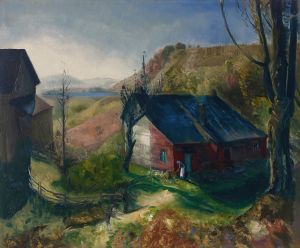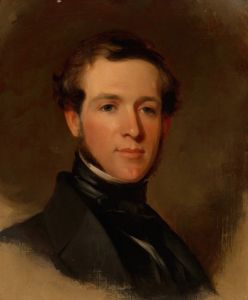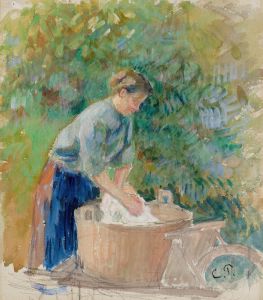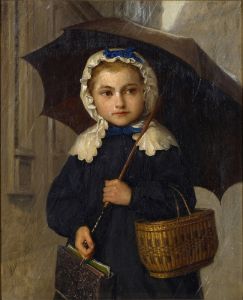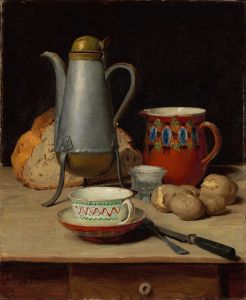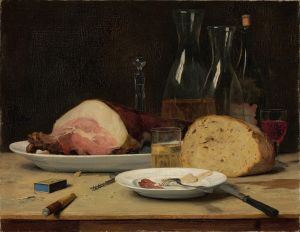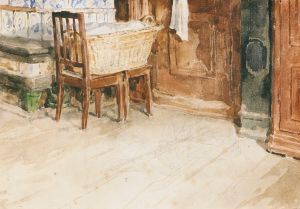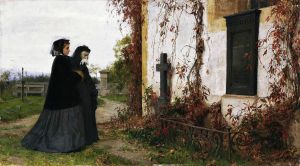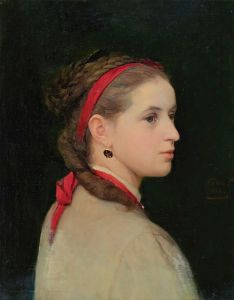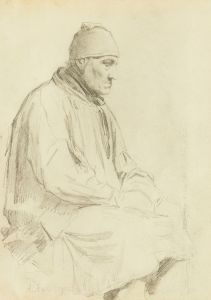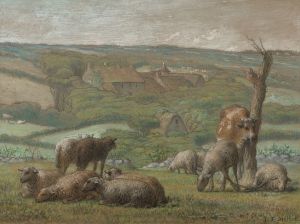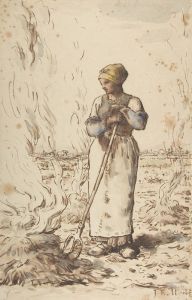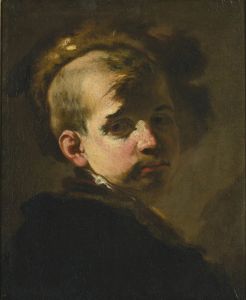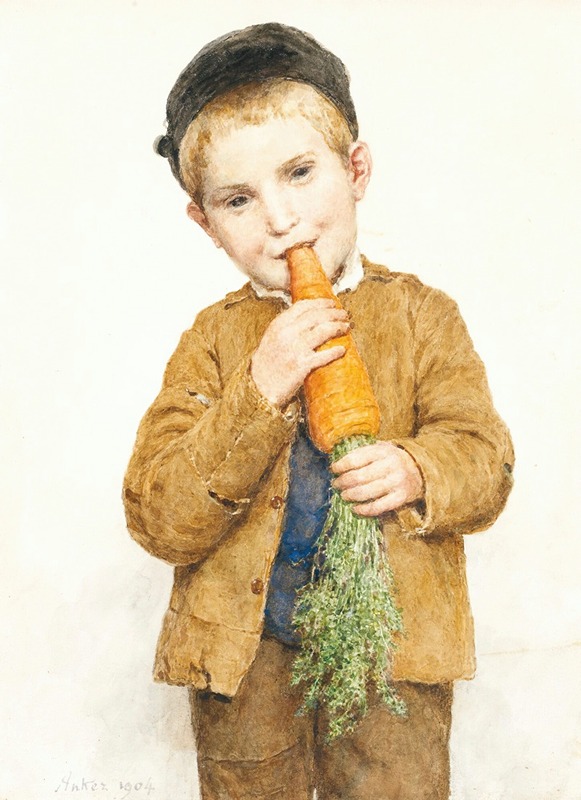
The Little Boy With The Big Carrot
A hand-painted replica of Albert Anker’s masterpiece The Little Boy With The Big Carrot, meticulously crafted by professional artists to capture the true essence of the original. Each piece is created with museum-quality canvas and rare mineral pigments, carefully painted by experienced artists with delicate brushstrokes and rich, layered colors to perfectly recreate the texture of the original artwork. Unlike machine-printed reproductions, this hand-painted version brings the painting to life, infused with the artist’s emotions and skill in every stroke. Whether for personal collection or home decoration, it instantly elevates the artistic atmosphere of any space.
Albert Anker, a Swiss painter renowned for his detailed and charming depictions of rural life, created the painting "The Little Boy With The Big Carrot." Anker's work often focused on everyday scenes, capturing the innocence and simplicity of childhood, and this painting is a quintessential example of his style.
Born in 1831 in Ins, Switzerland, Albert Anker became one of the most celebrated Swiss painters of the 19th century. He studied at the École des Beaux-Arts in Paris and was influenced by the Realist movement, which is evident in his meticulous attention to detail and his focus on ordinary subjects. Anker's paintings are characterized by their warm, inviting tones and the gentle, affectionate portrayal of his subjects.
"The Little Boy With The Big Carrot" exemplifies Anker's ability to capture the essence of childhood with both realism and tenderness. The painting depicts a young boy, likely from a rural Swiss village, holding an oversized carrot. The boy's expression is one of delight and wonder, a testament to Anker's skill in conveying emotion through his subjects. The setting is simple, with the focus entirely on the boy and his prized carrot, emphasizing the theme of childhood innocence and the joy found in simple pleasures.
Anker's work is often noted for its narrative quality, and "The Little Boy With The Big Carrot" is no exception. The painting invites viewers to imagine the story behind the scene—perhaps the boy has just pulled the carrot from his family's garden, proud of his find. This narrative element is a hallmark of Anker's paintings, which often depict children engaged in everyday activities, such as playing, studying, or helping with household chores.
Throughout his career, Anker remained committed to depicting the lives of ordinary people, particularly children, in a manner that was both realistic and idealized. His paintings are celebrated for their technical precision and their ability to evoke a sense of nostalgia and warmth. Anker's work provides a window into 19th-century Swiss rural life, capturing the customs, clothing, and environments of the time with great accuracy.
Albert Anker's paintings, including "The Little Boy With The Big Carrot," continue to be appreciated for their artistic merit and their ability to convey universal themes of innocence, simplicity, and the beauty of everyday life. Anker's legacy as a painter lies in his unique ability to portray the world with both realism and affection, making his work timeless and universally appealing.
Today, Anker's paintings are held in high regard and are displayed in various museums and collections, particularly in Switzerland. His work remains a significant part of Swiss cultural heritage, celebrated for its contribution to the Realist movement and its enduring appeal to audiences around the world.





